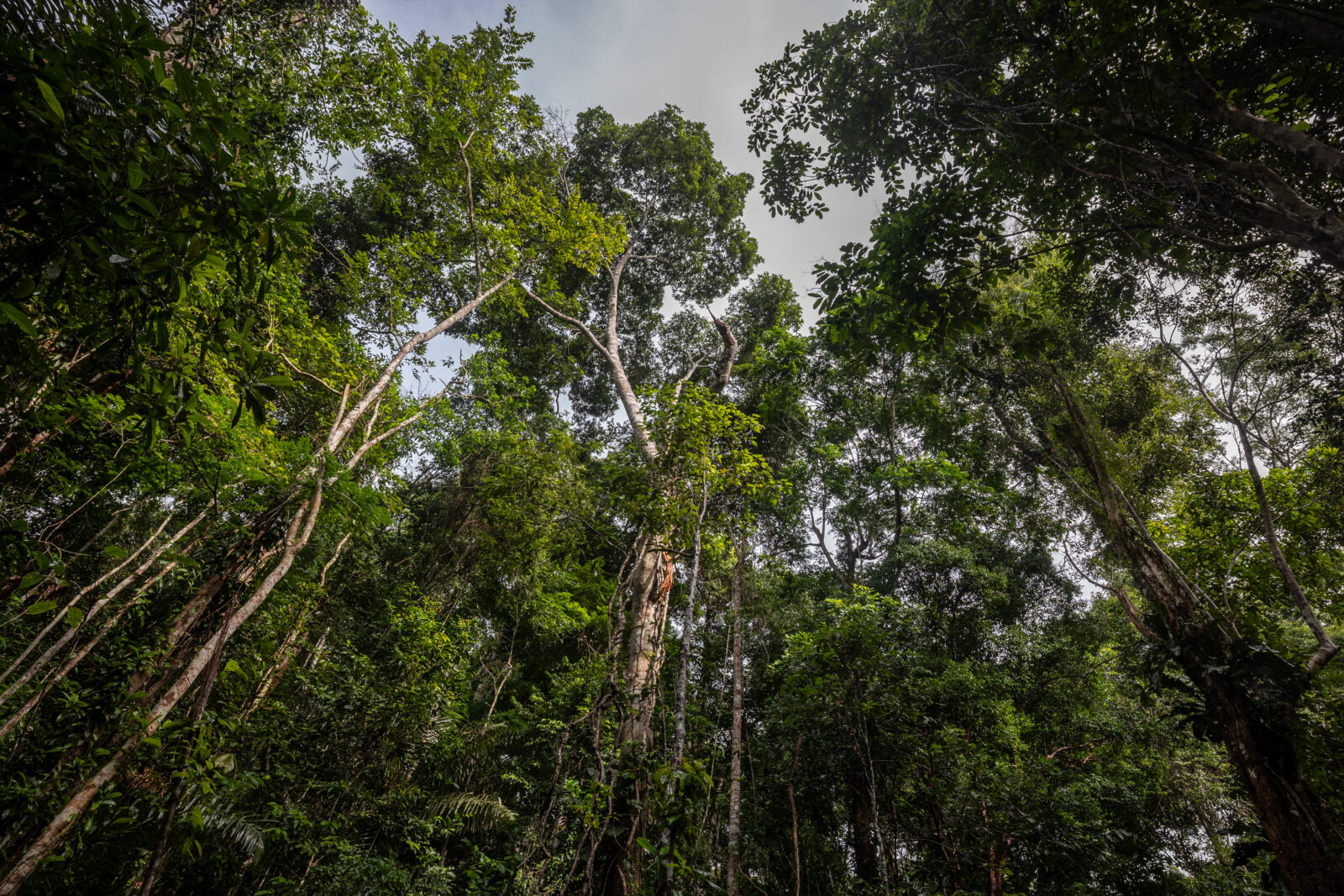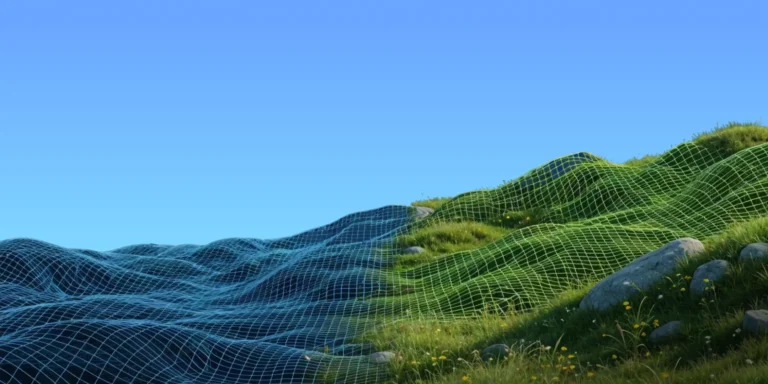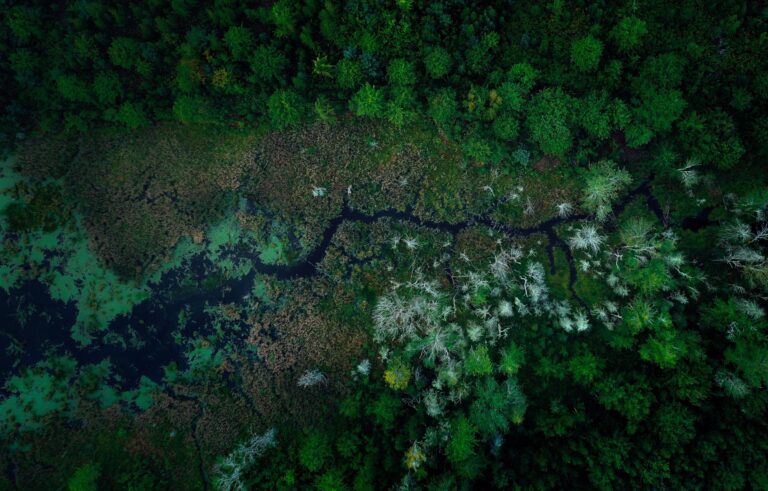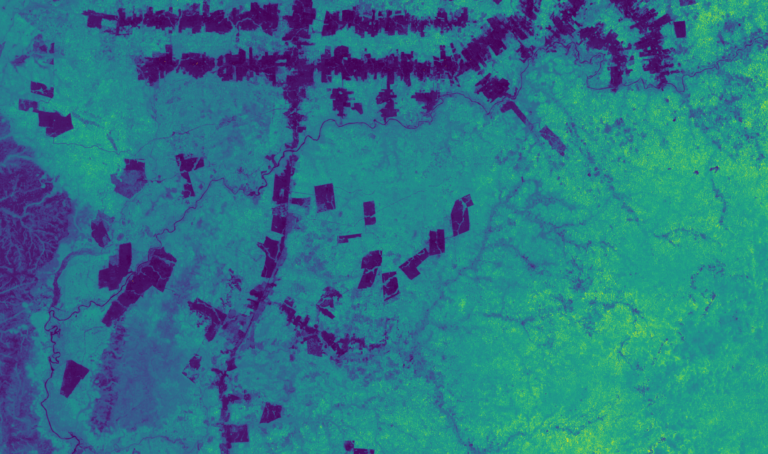In 2021, the tropics lost ten soccer fields of primary forest every minute 1. Without forests to absorb carbon and preserve natural habitats, we stand no chance of limiting global warming below 1.5° or even 2°C 2. Funding conservation through voluntary carbon credits is one of our most promising strategies for ending deforestation, but the carbon market has suffered from well-publicized concerns about credit quality.
At Pachama, we understand the fundamental challenges that come with evaluating the impact of forest carbon projects. But technology offers important solutions that can help companies invest in nature with confidence. Here, we explore why conservation projects are a vital part of the climate change and biodiversity solution, the challenges that underlie them, and how technology can ensure these projects — and their buyers — achieve the impact they claim to.
But first, what are conservation projects? Forest conservation projects, also known as avoided deforestation in carbon markets, use funding from carbon financing to protect stretches of forest from deforestation. Conservation describes one of three types of forest carbon projects, alongside reforestation and improved forest management.
Ready to invest in high-quality conservation projects?
Learn more about how Pachama can help you invest in tech-verified projects.
Why conservation projects matter — and why we need them now
Without funding from carbon credits, many of the world’s forests could simply become deforestation statistics. We’re at a crucial tipping point where protecting forest ecosystems now (particularly the planet’s vulnerable tropical forests) is critical for mitigating the worst impacts of climate change.
- Forests reduce atmospheric carbon. Forests act as carbon sinks, absorbing enormous amounts of carbon from the atmosphere and providing a necessary planetary cooling effect in the age of runaway global warming. In fact, protecting and restoring forests and other ecosystems could contribute up to 30% of what’s needed to meet this decade’s Paris Agreement goals 3. Deforestation depletes the world of its carbon reserves — and with emissions on the rise 4, we need carbon sinks more than ever.
- Deforestation emits irrecoverable carbon. When a forest is destroyed, the planet doesn’t just lose a natural carbon sink — it also gains all that stored carbon back into the atmosphere. Every year, deforestation accounts for as much as 10-20% of global carbon emissions 5. The carbon stored in important natural ecosystems, like tropical forests, is referred to as irrecoverable. If lost, it can’t be recovered by 2050 in time to avoid the most catastrophic impacts of climate change.
- Biodiversity loss is accelerating climate change. Forests don’t just absorb carbon. They provide habitats for native and endangered species, offer food sources for wildlife, and create complex ecological connections with soil and waterways. Between 1970 and 2018, we’ve seen a 69% loss in wildlife populations 6. And unless we act urgently to protect critical habitats, this number will only rise. It can take decades and even centuries for a forest to offer the rich biodiversity benefits of old-growth forests 7, which is why taking action now to protect the forests that already exist is so crucial.
“When you’re investing in conservation, you’re not just investing in carbon,” says Rachel Engstrand, a Forest Carbon Scientist with Pachama. “You’re investing in nature, and nature is so much more than a single element.”
Beyond forests’ climate impact, they’re also critical to the livelihoods and well-being of local (often indigenous) communities. One in four people globally relies on forests for their primary income 8. If we don’t slow or stop deforestation as soon as possible, the human and environmental consequences are enormous.
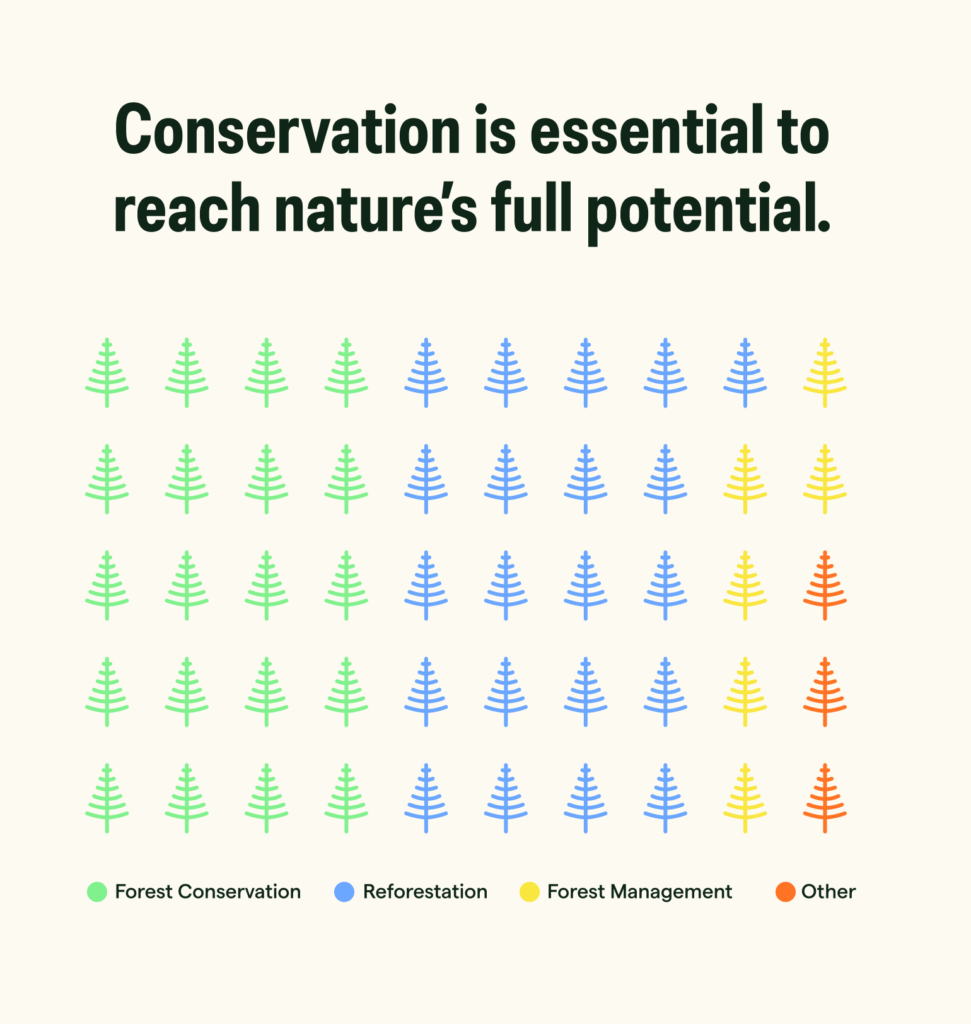
Key challenges of forest conservation projects
Forests are complex ecosystems that are intrinsically connected to the natural and human world, which makes it challenging to quantify the precise impact of conservation credits. In some cases, projects end up over-crediting: selling more credits (tons of carbon removed) than they truly provide.
There are fundamental flaws with many conservation projects active today, and less than 30% align with Pachama’s latest Evaluation Criteria. Most of these projects don’t align due to concerns around additionality.
What is additionality?
A key concern is whether a project is additional — that is, the emissions reductions generated by a carbon project would not have occurred without that project. Ensuring additionality is a complex but essential step in creating a transparent and high-integrity voluntary carbon market, but it’s particularly difficult for conservation projects.
Additionality is determined through baselines
For the most part, determining additionality comes down to calculating a project’s baseline, which describes what would happen if the carbon project never existed. Would that forest have been destroyed? How much of it? How many emissions would have been released had there been no concerted effort toward conservation?
The baseline often has the largest influence on how many carbon credits a project receives. The volume of credits issued is based on the difference between project and baseline emissions — in other words, the difference in emissions with and without a carbon project.
What makes avoided deforestation baselines so difficult to calculate is that they are counterfactuals: you’re trying to predict something that never occurred. Pachama evaluates baselines by using satellite data to observe what actually happened on the ground. We’ve found two common challenges:
Baseline challenge #1: Reference region suitability
To calculate a baseline for conservation projects, most developers delineate a reference region, which is similar to the project area across key environmental and social attributes, but it is not a carbon project. When appropriately selected, a reference region gives an accurate indication of the deforestation risk in the absence of a carbon project.
But not all projects select suitable reference regions. Pachama uses spatial analysis and expert scientific review to ensure that the reference region represents an appropriate proxy for the project area and its potential drivers of deforestation.
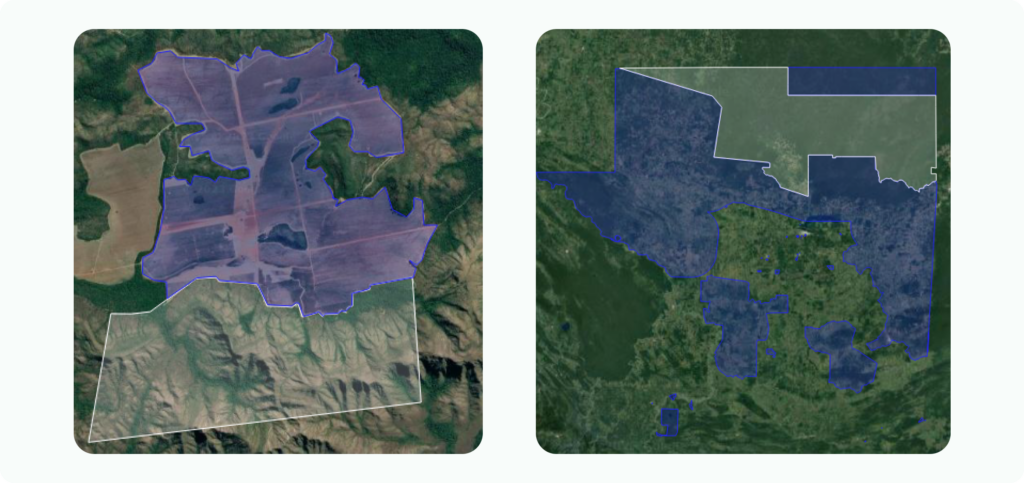
Baseline challenge #2: Emissions accounting
To accurately account for baseline emissions, we need two data sets: a measure of forest loss and an inventory of stored carbon. Both pose challenges. Detecting forest loss over the entire project area is a monumental task, and many developers use outdated technology and error-prone human analysis. When it comes to carbon inventories, they often rely on time-intensive manual measurements over a small sample of a project’s area, or simply use data from existing literature.
Pachama checks baseline emissions accounting using high-resolution satellite data to observe annual forest loss in a project’s reference region. We then compare what we observe to what the project reported. We’re looking to ensure that the project baseline emissions are more conservative than the emissions we’ve observed. If the emissions are greater, the project could have an inflated baseline and be at risk for over-crediting.

Ready to build your nature strategy?
Learn more about how Pachama can help you invest in tech-verified projects.
The answer to conservation crediting challenges? Better technology and smarter analysis.
Despite challenges around reference regions and emissions calculations, conservation is indispensable for the health of the planet (and humans). Companies are understandably worried about the reputational and climate risk of conservation credits. But ignoring these crucial projects is not the answer — even for companies whose business activities don’t directly impact forest loss. The planet needs conservation projects, and we can make these projects safer for buyers by using technology to ensure that individual projects make the impact they claim to.
Technology is necessary to modernize the market and drive transparent, higher-integrity crediting at the scale the planet needs. Pachama’s technology assesses the true impact of conservation projects by taking an algorithmic approach to computing baselines and quantifying the uncertainty of emissions calculations. Combining the most advanced earth observation techniques with rigorous scientific analysis can give buyers far more confidence in the quality of their conservation credits.
We are entering a new era of carbon markets, where greater transparency is achieved through:
→ Satellite observations with the most advanced remote sensing and machine learning (as opposed to manual data collection)
→ Automated, standardized calculations with algorithmic baselines, giving buyers confidence intervals to improve trust in credit quality (as opposed to inconsistent, manual calculations)
→ Continuous project monitoring with interactive visuals for both carbon and beyond-carbon impacts (as opposed to static documents and little to no updates)
→ Planning new tech-enabled forest projects with transparency and integrity (as opposed to projects created and managed without the power of modern technology)
How companies can include conservation projects in climate goals
We recommend companies invest in conservation efforts in a way that maximizes environmental impacts and funds the projects the planet needs most.
Here’s how we recommend companies approach conservation funding:
- Buy only the highest quality carbon credits. Work with a trusted partner like Pachama to ensure the credits you buy are thoroughly vetted for impact, and be prepared to budget more for higher-quality credits.
- Balance contribution with simultaneous emissions reductions. A holistic commitment to corporate climate action requires both deep emissions reductions and a contribution to climate solutions outside of your own business activities. The good news is that companies can do both at the same time — there’s no need to wait to invest in conservation. The Science-Based Targets Initiative (SBTi) includes conservation funding in its list of “no-regrets actions that companies can take now” and recommends that companies focus simultaneously on reducing emissions and funding carbon projects.
- Invest in projects with local community support. “The strongest predictor of a successful conservation or reforestation project is often not the science, technology, or funding, but rather, the amount of engagement the project has with the local community,” says Engstrand. Local communities have significant influence over the long-term fate of conservation projects and can also benefit significantly from well-managed projects 9.
- Go beyond carbon to develop separate climate goals for water, biodiversity, and nature. Leading companies are setting unique climate goals that stretch further than emissions reductions. Microsoft has committed to protecting more land than it uses by 2025, Amazon has established a $100 million fund to restore and conserve forests and other ecosystems, and Walmart has pledged to protect at least 50 million acres of land by 2030. With their many positive effects on biodiversity, waterways, and local communities, conservation projects can be an effective mechanism for achieving non-carbon climate targets through a single investment.
A no-regrets approach to conservation
Conserving global forest ecosystems is a necessary and urgent requirement for mitigating the effects and trajectory of climate change. Nature is a complex and beautifully interconnected ecosystem, and because of this complexity, it will never be completely void of risk. But with advanced technology, buyers can mitigate their risk and capitalize on the enormous planetary and humanitarian opportunities nature offers.
The benefits and urgency of funding conservation projects far outweigh the risks. Working with a technology partner like Pachama, companies should not be afraid to invest in these critically important conservation projects and incorporate nature-based climate goals into their sustainability strategies. Ultimately, addressing climate change requires all hands on deck — and we can’t afford to wait.
Ready to invest in high-quality conservation projects?
Learn more about how Pachama can help you invest in tech-verified projects.

